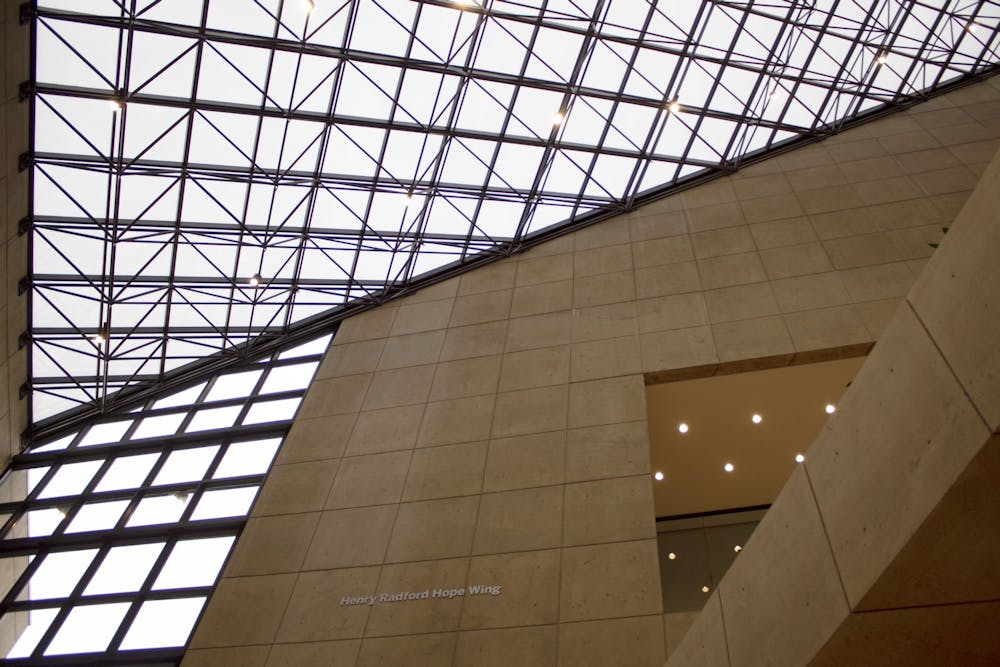Everything for the exhibition was ready to be installed on March 16. The artwork had been prepped, the design plan was complete and a 3D visualization of the first-floor gallery had been rendered. But all these plans for “Facing the Revolution: Portraits of Women in France and the United States” were put on pause when the Sidney and Lois Eskenazi Museum of Art closed to slow the spread of the coronavirus.
“Facing the Revolution” features portraits of women created by French and American artists between 1785 and 1835. The works of art show women whose lives were affected in the midst of political and artistic revolution in both France and the United States, according to the publication's website.
Galina Olmsted, assistant curator of European and American art, had been working on this exhibition since July with graduate assistant Michelle Mandarino, who wrote a timeline and secured rights to images.
“What happens when you do all this work, and then nothing happens?” Olmsted said, acknowledging the collective effort with her coworkers to execute the show.
In January, Olmsted collaborated with Cassi Tucker, manager of museum technology, to create a digital component for the show, which would ultimately prime themselves to go virtual when the museum closed.
The permanent online publication features 13 paintings and busts. Some are from the Eskenazi museum, while most were borrowed from the Speed Art Museum and the Indianapolis Museum of Art at Newfields.
“Without this, it would have been hard to share all of the hard work that went into the show,” Tucker said about the website, which launched Tuesday.
Online exhibitions aren’t exactly the same as physical ones. For instance, Olmsted said she loves to see people have in-person experiences with works of art in a gallery setting. Sometimes a painting is so big, viewers need to see it in person to feel immersed in it.
But when that’s not possible, online publications offer flexible hours and accessibility to people far from the museum or with disabilities.
“It slows down the experience in a way that I think will really make people think about the content of the exhibition,” Olmsted said.
Olmsted, Mandarino and Tucker made additions to the website in order to accommodate the exhibition postponement. For instance, they added an exhibition checklist at the bottom that lists each of the paintings and busts with its artist, name, date, medium, dimensions and where it was borrowed from.
This online exhibition is part of a larger project, “A Space of Their Own,” which will compile research on women painters, printmakers and sculptors in the United States and Europe between the 15th and 19th centuries, according to the website. Facing the Revolution is a soft launch for the project, Tucker said.
“Facing the Revolution will be folded into scholarly publications to form part of a record of women artists and their contributions to the field of art and art history,” Tucker said.
If it were launched on its original date on March 25, the exhibition would have opened during Women’s History Month.
To visualize how the exhibition would look, Olmsted, Tucker and the design team worked with Bill Bass, art handler and 3D visualization artist. He created a 3D model of the first-floor gallery to plan the installation of the exhibition.
“It’s like a bouncing board for ideas after it’s made,” Bass said about 3D modeling. “I’m kind of providing a framework within which the curator and design team can work.”
Even though the 3D model won’t be used to install “Facing the Revolution” anytime soon, it can be used as an educational tool. Bass said he hopes to eventually share 3D models of the museum's galleries with the general public in some way, which the Smithsonian Institution and the British Museum have already done using the website Sketchfab.com.
Olmsted and Tucker said they hope the exhibition will reopen at a later date. Despite the change of plans, Olmsted said it’s fulfilling to see people engaging with a project she and a team of colleagues had worked on for months. Facing the Revolution is her first exhibition at the Eskenazi museum and she's already working on more.
“I feel like my most rewarding experiences are when the public is able to have experiences with the work we do,” Olmsted said. “So it’s been great to maintain our connection with our audience and broaden it too.”




